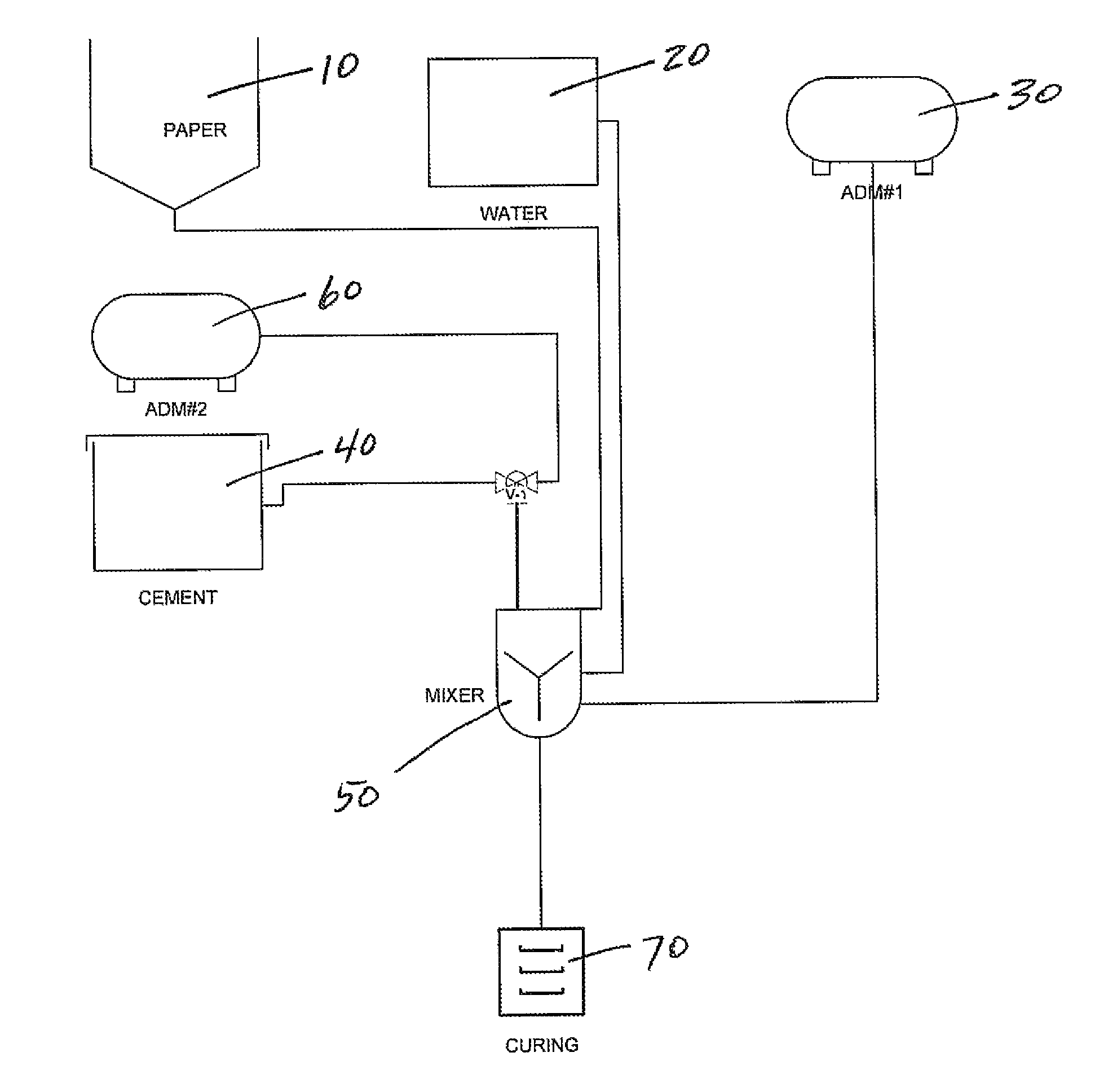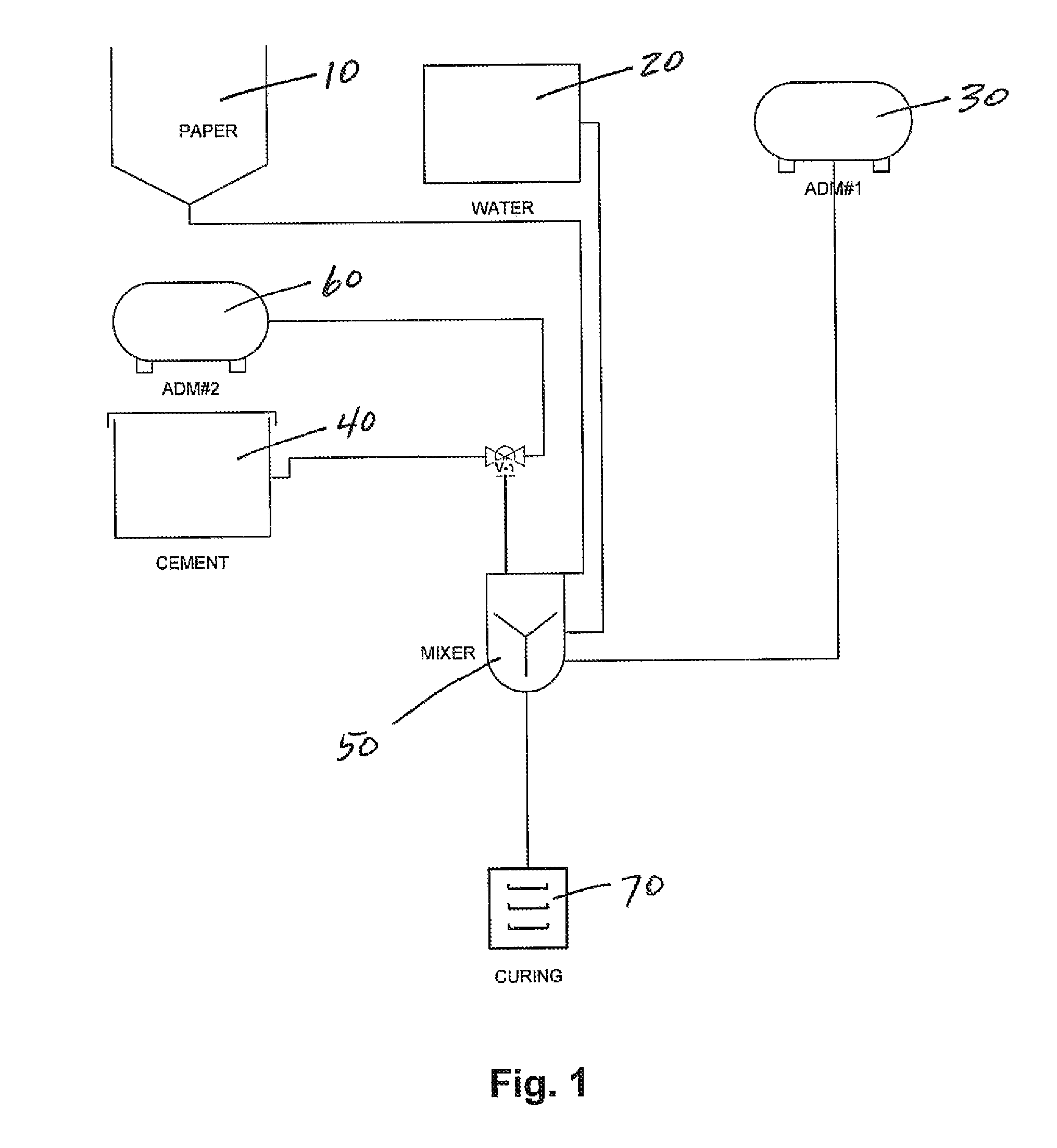Load bearing insulation and method of manufacture and use
a load-bearing and insulation technology, applied in the direction of manufacturing tools, sustainable waste treatment, electric/magnetic/electromagnetic heating, etc., can solve the problems of general slow time to mix economically useable building products, limited output from this process, etc., to speed up the curing and palletizing step, accelerate the mixing
- Summary
- Abstract
- Description
- Claims
- Application Information
AI Technical Summary
Benefits of technology
Problems solved by technology
Method used
Image
Examples
Embodiment Construction
[0018]FIG. 1 is a schematic diagram of the process of mixing the materials to form the load bearing insulating building materials. Shredded paper 10 is added from a hopper to a mixer 50 along with water and the first admixture 30 comprised of a water dispersing agent, consisting of calcium stearate, trienthanolamine and 4-cloro-3-methylphenol (PCMC) in a water solution and sodium silicate having a pH of about 11, which acts as a fire retardant in the finished product. Lower pH sodium silicate does not perform as well as the higher pH solution for reasons presently unknown to applicants, but is believed to be critical for the successful mixing of the material.
[0019]The first admixture in the preferred embodiment is composed of Cleveland, Ohio Euclid Chemical Company's Blocktite water repellant and the sodium silicate. The paper, water and first admixture are mixed for approximately twenty minutes to thoroughly wet the shredded paper which forms the first matrix. The cement 40 is adde...
PUM
| Property | Measurement | Unit |
|---|---|---|
| compressive strength | aaaaa | aaaaa |
| compressive strength | aaaaa | aaaaa |
| compressive strength | aaaaa | aaaaa |
Abstract
Description
Claims
Application Information
 Login to View More
Login to View More - R&D
- Intellectual Property
- Life Sciences
- Materials
- Tech Scout
- Unparalleled Data Quality
- Higher Quality Content
- 60% Fewer Hallucinations
Browse by: Latest US Patents, China's latest patents, Technical Efficacy Thesaurus, Application Domain, Technology Topic, Popular Technical Reports.
© 2025 PatSnap. All rights reserved.Legal|Privacy policy|Modern Slavery Act Transparency Statement|Sitemap|About US| Contact US: help@patsnap.com


